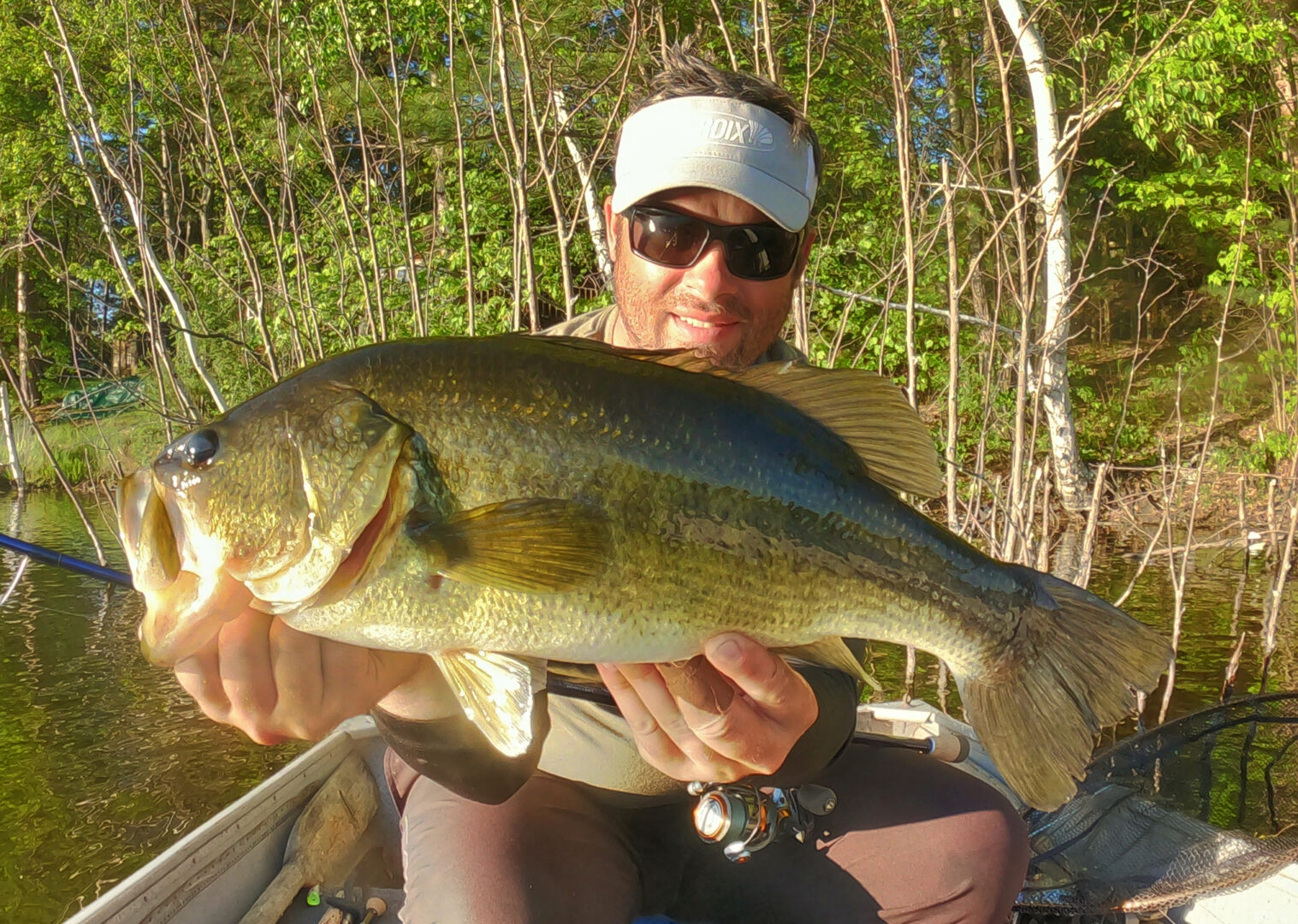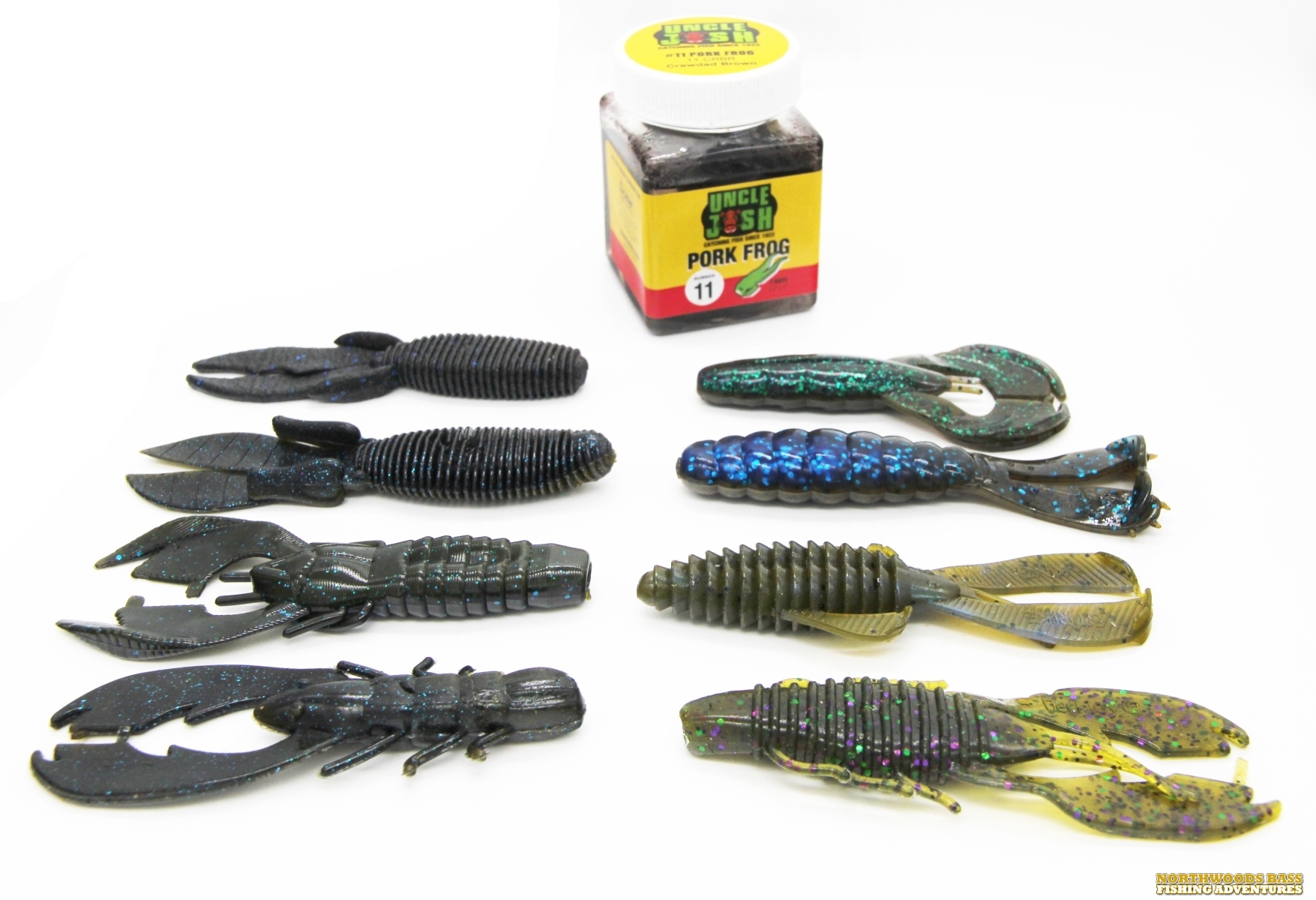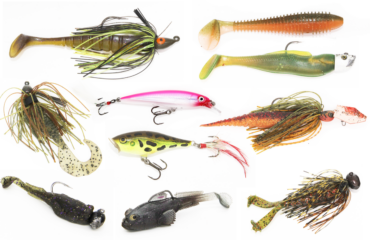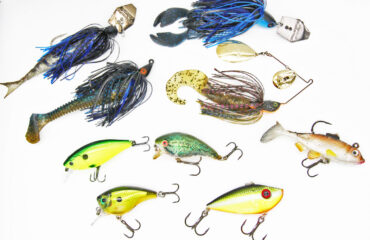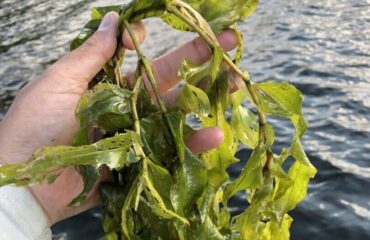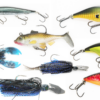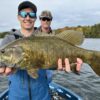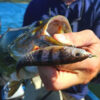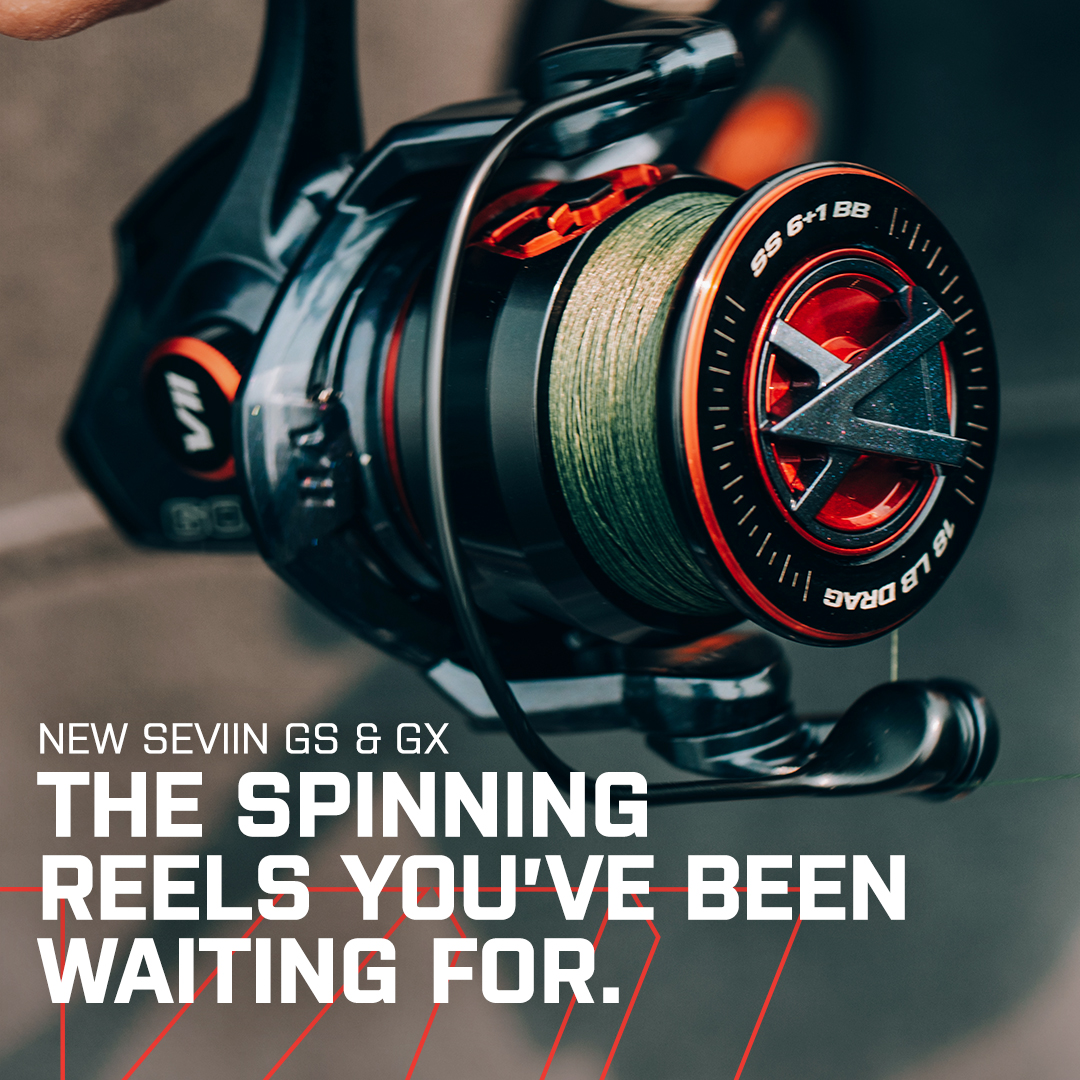High Water Strategies for Largemouths
With over 100-plus inches of snowfall this winter, I would expect high water fishing and its strategies to be in everyone’s bass fishing considerations these next several weeks. Here’s the deal of what happens as largemouths are eager to push into newly formed flooded shoreline habitats.
In a lake’s high water years, lily pads and many other submergent plant species sprout and reclaim the lake’s littoral zone. Eel grass, pondweed and cabbage weed species expand throughout too. Laydowns, wood cover, and trees that were exposed and dry the previous year also become submerged. Bogs, tamarack swamps, and wetlands surrounding the lake also absorb water from the overcapacity lake.
When high water rises into these shoreline areas, they flood with big bass. Flooded habitats offer a canopy of cover in which largemouth are fee to roam and explore deep into the flooded overgrowth and buffer zone.
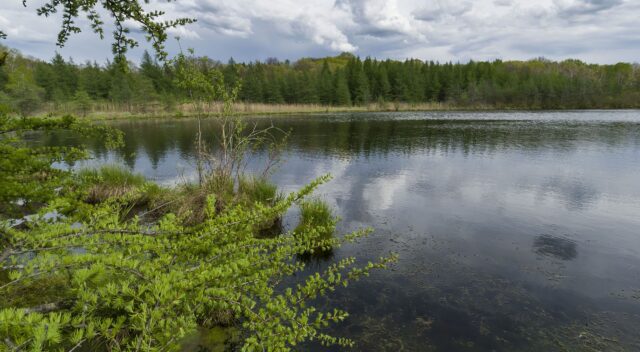
The fishing focus of spring and summer should be around flooded near shore cover. These locations are bass magnets in spring for spawning habitat. However, largemouth frequently remain close by all summer long due to the forage overabundance of amphibian species, minnows, and juvenile bluegills attracted to the flooded cover too.
These past few seasons, bogs and flooded buffer zones have become a focal point to most of my spring and summer largemouth fishing. If you’ve been fishing only the edges of the bog, which was once the lake’s shoreline, you’re not fishing effectively and deep enough.
Largemouth will roam, mingle, and ambush deep into the flooded bogs and overgrowth that can be impenetrable for the average angler. These flooded buffer zones can overflow several yards past the lake’s original shoreline, creating amazing habitat for bass.
Their edges can be good too. Check the points and pockets. The largest bushes with depth in these areas normally attract the biggest fish, with them relating to the thickest, shadiest portions of them.
As water clarity is improved during early season and into spawning season, you’ll be able to sight fish these locations effectively.
Launching boats into flooded lakes can be as difficult, and occasionally impossible, as it once was attempting to launch into a dried up landing in drought years. Only this time the entire vehicle can be in the water. Today, many original boat landings and access sites have been submerged or reclaimed by flooded habitat. Some of these seepage lakes are presently 5 to 8 ft. higher than the original lake bed.
Fishing strategies will vary by lake size and difficulty of access. On small lakes with a wilderness approach, kayak and small boats equipped with electric trolling motor are best and most effective. You can quietly stalk the shallows, not spook, and avoid near shore commotion and destruction.
On large lakes whose ramps will allow launching with boat & trailer, any water craft with an 8 inch or less draft is best. You’ll be able to penetrate through brush and submerged bogs, deep into the flooded buffer zone. 80 to 101 lb. thrust trolling motors are necessary for navigation and meandering. Cable steer is better than power steer due to the maneuverability required. Push poles will get the job done too, and will provide better stealth and navigation. Anchoring systems are helpful in wind, but usually not necessary.
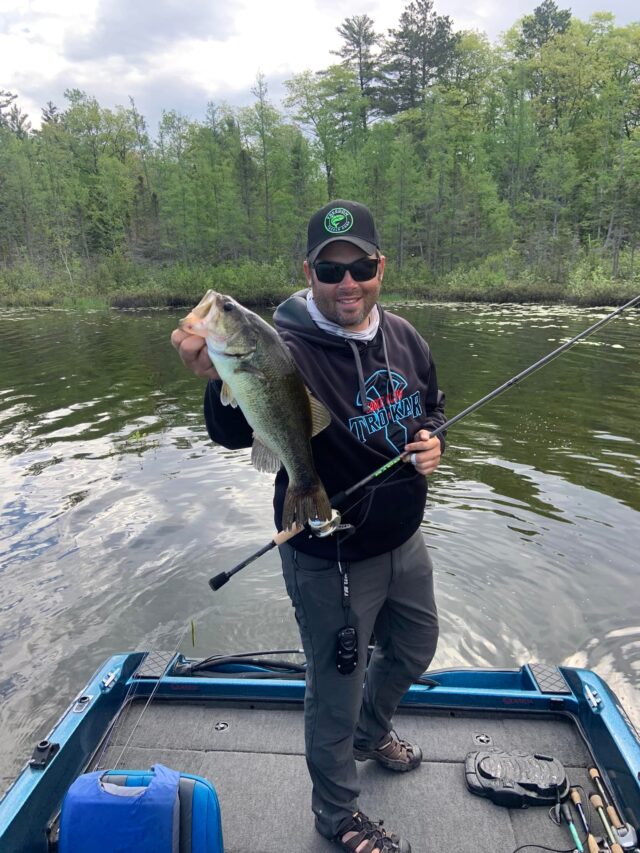
Pitching and Flipping Strategies
Once you find the fish, attacking the flooded cover, its openings, and casting lanes is accomplished with skillful pitching and flipping tactics. Shallow water cover fishing and largemouth extraction requires heavier rod and reel set-ups with braided lines.
For my target shooting, I’ve flooded myself with a variety of St. Croix Rod options. In the heaviest impenetrable cover, I’ll choose my Victory Flip’N (VTC73HMF) that is paired with a 7:0.1 gear ratio reel featuring a flipping switch. It is spooled with 50 lb. Cortland Silent Flip, a silky smooth and quiet 16 carrier construction braid. The next two options, I use my 7 ft heavy action St. Croix Legend Tournament Bass Dock Sniper (LBC70HF), as well as the Mojo Bass Dock Sniper (MJC70HF). Both rods are paired with 7:3.1 reels and spooled with 20 lb. Cortland Masterbraid, and used for working along the edges and through casting lanes with casting jigs.
The Dock Sniper, with its IPC blank, has an outstanding flex and loading capacity. It is tailor-made for pitching, flipping, and skipping. If you have even shorter rods in your arsenal, you’ll fish these environments with better angles. High end rods are not necessary due to the abrasive and damaging habitat, but greatly aids bite detection and powerful hook setting.
3/8 oz. to ¾ oz. black and blue jigs are synonymous with largemouth fishing, and are the only colorways needed in casting, and pitching & flipping head styles. Freedom Tackle FT Series structure jigs and flipping jigs answer the call.
Pitching and flipping brush guard jigs in combination with craw and creature trailers such as Bizz Baits Bizz Bugs and Killer Craws in black & blue, and mud craw colors are phenomenal. Creature baits that include YUM Wooly Bugs (bream), Missile Baits D-Bombs (superbug), Net Bait’s Paca Craw and Chunk, and Berkley’s MaxScent Creature Hawg are each outstanding jig trailers also. These are the only jig trailers I tend to carry.
Pitching and flipping must be prioritized. However, there may be some openings and edges to make a few accurate casts. Active fish could be meandering through these casting lanes. In these situations, swim jigs are utilized heavily.
Jig Trailers
Pitching and flipping brush guard jigs in combination with craw and creature trailers such as Bizz Baits Bizz Bugs and Killer Craws in black & blue, and mud craw colors are phenomenal. Creature baits that include YUM Wooly Bugs (bream), Missile Baits D-Bombs (superbug), Net Bait’s Paca Craw and Chunk, and Berkley’s MaxScent Creature Hawg are each outstanding jig trailers also. These are the only jig trailers I tend to carry.
Be mindful that largemouths nest and complete their reproductive obligations surprisingly quickly. Late-May through early June is a peak time for targeting big female fish where they will be moving in to nest nearby heavy cover. These fish will be utilizing these flooded habitats, if accessible until then. The nice thing about targeting these fish is they’ll always be in hiding. Most nests are hidden and undetectable, but are to be expected next to wood, piers, bog edges, and between lily pad roots to name a few. As a result, and enjoyably, all casting is done blindly towards these targets.
Find fisheries that grow big largemouths, and then identify their early season locations where all fishing efforts will take place. As a result of our high water and its flooded habitats, these specimens are feeding frequently, now more than ever before in their lifetimes.
Employing this high water mentality produces trophy largemouths in spring and early summer.
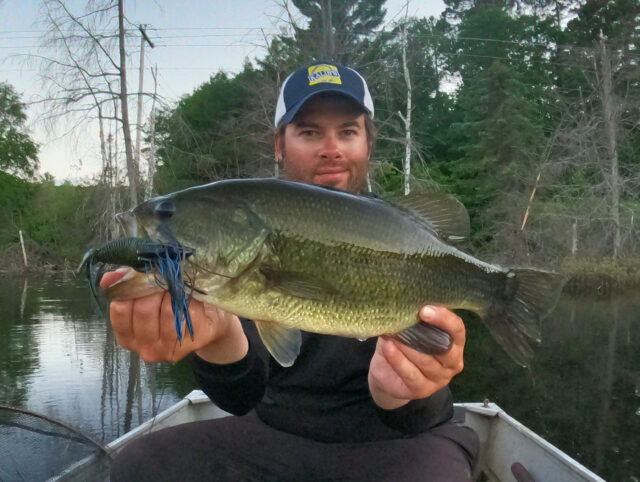
Andrew Ragas splits time between the Chicago area and Wisconsin’s Northwoods. Based in Minocqua, WI, he specializes in trophy bass fishing and offers guided trips from May thru October. While big bass is the passion, he dabbles in multi-species as well. He may be visited online at www.northwoodsbass.com


